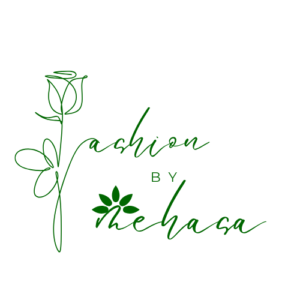4 Beauty Secrets That Truly Work
Beauty Secrets: Unlocking the Key to Timeless Radiance Beauty is not just skin deep—it’s a combination of confidence, self-care, and the right products that bring out your inner glow. Over the centuries, beauty secrets have been passed down through generations, ranging from ancient remedies to the latest skincare innovations. Whether it’s glowing skin, lustrous hair, or the perfect makeup, beauty secrets can make all the difference. In this article, we’ll delve into the world of beauty secrets, from time-honored rituals to modern-day techniques, ensuring you can unlock your best self. The Origins of Beauty Secrets Beauty secrets have been around since the dawn of time. Ancient civilizations recognized the importance of self-care and beauty rituals long before modern skincare products hit the shelves. These secrets were often shared among queens, royal families, and influential figures who sought to maintain their radiance and allure. Let’s explore some of the ancient beauty secrets that have stood the test of time: Ancient Egypt: Egypt was home to some of the most luxurious beauty rituals in history. Cleopatra, one of Egypt’s most iconic queens, was known for her extravagant beauty regimen. She used milk baths to soften her skin, and honey, a natural humectant, was frequently applied to maintain her skin’s moisture and radiance. Essential oils such as frankincense and myrrh were also staples in her skincare routine, known for their healing and anti-aging properties.Modern Take: Today, we still rely on milk-based products for moisturizing and rejuvenation. Honey remains a common ingredient in natural skincare for its ability to hydrate and combat acne. Ancient Greece and Rome: The Greeks and Romans also had a profound impact on beauty. Greek women, particularly, used olive oil as a base for skincare, thanks to its anti-inflammatory and moisturizing benefits. They would mix olive oil with salt for exfoliation or use it as a base for perfumes.Modern Take: Olive oil continues to be a popular skincare ingredient, known for its ability to deeply hydrate and nourish. It is also commonly used in haircare for its ability to boost shine and softness. Ancient China: In ancient China, women revered the practice of Tai Chi for its mind-body benefits, which were believed to contribute to youthful, glowing skin. Chinese beauty secrets included the use of ginseng for its ability to improve skin texture and reduce the signs of aging. Jade rollers, which are still widely used today, were originally used to massage the face and promote circulation, improving skin tone and reducing puffiness.Modern Take: Ginseng continues to be a popular ingredient in anti-aging skincare products. The jade roller has seen a resurgence in popularity, with many people using it to reduce facial tension and promote a more youthful complexion. Modern Beauty Secrets: What Works Today With advancements in technology and innovation, the beauty industry has seen a wave of new treatments and products that promise to enhance natural beauty. However, the best beauty secrets still incorporate many tried-and-tested practices, along with modern techniques for maintaining flawless skin, hair, and nails. Let’s explore some beauty secrets that stand the test of time in today’s fast-paced world: Hydration is Key: One of the most important beauty secrets is hydration. While it might seem simple, drinking enough water is the foundation of healthy skin. Dehydration can lead to dull, dry, and aging skin. Additionally, hydrating skincare products like moisturizers, serums, and masks can provide an extra boost to your skin’s glow.Secret Tip: To ensure your skin stays hydrated, use products with hyaluronic acid, a powerful ingredient that attracts moisture to the skin, leaving it plump and refreshed. Consistent Skincare Routine: A consistent skincare routine is vital for maintaining healthy and radiant skin. Many people make the mistake of jumping between products or neglecting skincare altogether. It’s important to cleanse, exfoliate, tone, and moisturize regularly, while incorporating sunscreen into your routine to protect your skin from harmful UV rays.Secret Tip: For maximum results, don’t forget to apply serums or treatments that cater to your specific skin concerns. Whether it’s anti-aging, acne, or pigmentation, targeted treatments can work wonders when used consistently. Embrace Minimal Makeup: While makeup can certainly enhance your features, the true beauty secret lies in keeping it minimal and allowing your natural beauty to shine through. A natural makeup look is all about glowing skin, a bit of mascara, and a pop of lip color. Using makeup to highlight your best features without overdoing it will leave you looking radiant and fresh.Secret Tip: The “no-makeup makeup” look is achieved by opting for lightweight foundations, tinted moisturizers, or BB creams. A touch of highlighter on the cheekbones and brow bones can add dimension and an effortless glow. Anti-Aging Secrets: Aging is a natural process, but there are several steps you can take to minimize its visible effects. Anti-aging skincare involves the use of products that promote collagen production, reduce fine lines and wrinkles, and protect the skin from environmental damage.Secret Tip: Retinol, vitamin C, and peptides are key ingredients to incorporate into your skincare routine for their ability to stimulate collagen production and fight signs of aging. Additionally, always wear sunscreen to protect your skin from premature aging caused by UV rays. Beauty Sleep: Rest is a major part of any beauty routine. Sleep allows your body to repair itself, and your skin is no exception. During sleep, the skin goes into repair mode, and your body produces growth hormones that stimulate collagen production, helping to keep skin firm and radiant.Secret Tip: Make sure you get enough sleep (7-9 hours per night), and consider using silk pillowcases to reduce friction on your skin, preventing sleep lines and wrinkles. Exfoliate Regularly: Exfoliation is a vital step in any skincare routine to remove dead skin cells and promote skin renewal. Regular exfoliation helps maintain smooth, clear, and glowing skin. Both physical and chemical exfoliants can be used, but it’s important to choose the right one for your skin type.Secret Tip: If you have sensitive skin, opt for gentle exfoliating products with enzymes or mild




